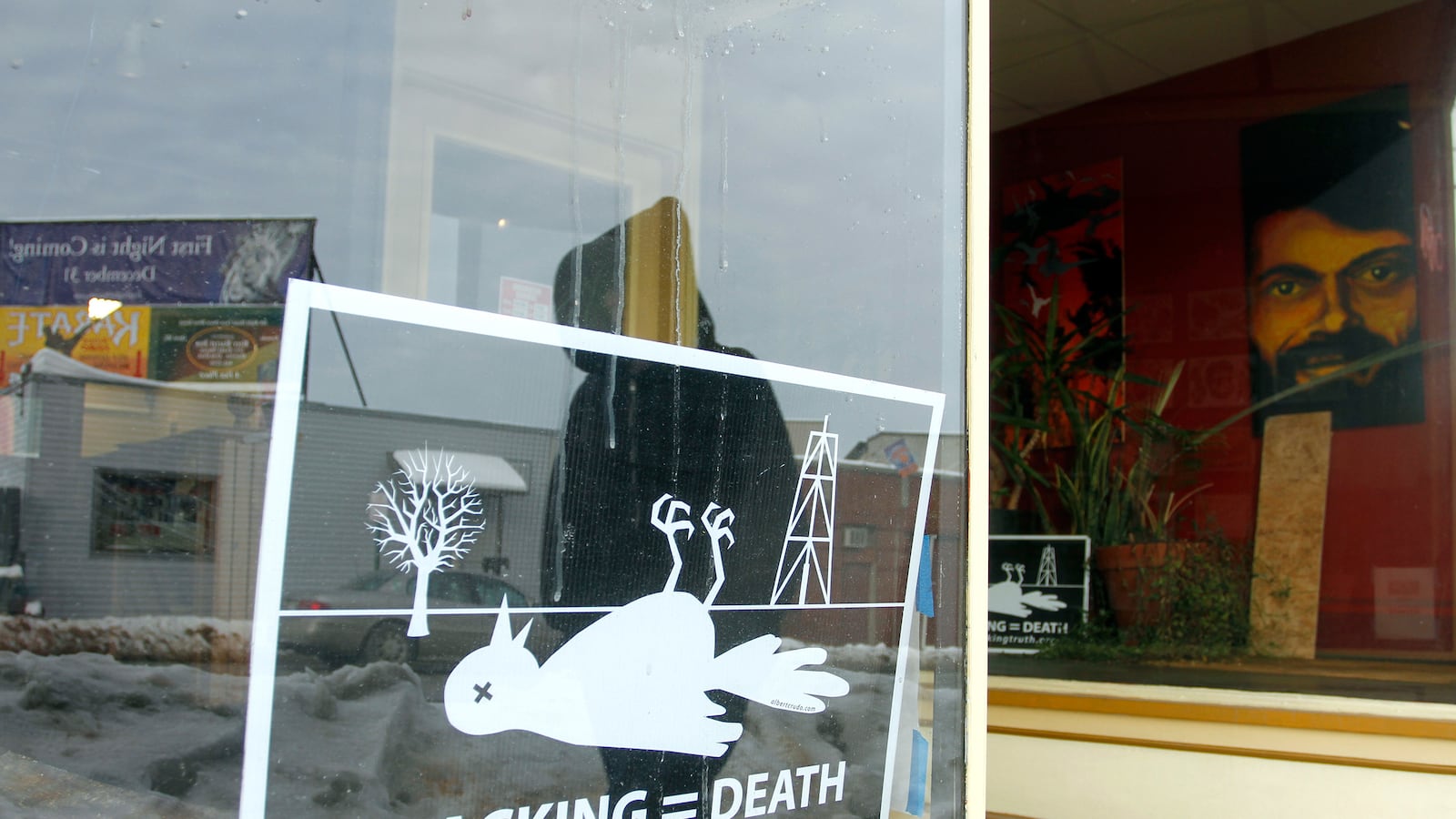The state of New York has banned fracking—for now, anyway. Environmentalists have cheered, the fracking industry has scowled, and for the most part, coverage of the decision has focused on the political factors weighing on Governor Andrew Cuomo: the timing of the report’s release, six weeks after Cuomo won re-election; the governor’s uncharacteristic “I’m just doing what the experts say” rhetoric; and so on.
It doesn’t seem many people have read the actual report (89 pages plus 95 more of endnotes and appendices), though. This is a shame, since it’s a fascinating window into how uncertainty factors into environmental policy, and how the most mundane consequences may be the most dangerous.
First, the shortest summary of A Public Health Review of High Volume Hydraulic Fracturing for Shale Gas Development (PDF) is: We don’t know if it’s safe or not.
As the title implies, the New York report is not a study, but a review of existing studies—dozens of them, from around the country—as well as conversations with officials in other states who are also studying the issue. In addition to the tens of detailed studies, the report identifies 13 comprehensive, systematic ones that might settle the matter once and for all. “These major study initiatives may eventually reduce uncertainties regarding health impacts of HVHF [fracking] and could contribute to a much more complete knowledge base for managing HVHF risks,” the report says. “However, it will be years before most of these major initiatives are completed”
Sigh. Even the most eagerly anticipated study, the EPA’s analysis of fracking’s potential effects on drinking water, begun in 2011, is not due to be complete until 2016.
In the meantime, most of the detailed studies are incomplete in one way or another. For example, studies cited in the report have shown a higher incidence of birth defects for people living near drill sites. But the report notes that those people are also likely to be economically disadvantaged, which correlates with lower overall heath. Likewise, it’s scary that water pollution from fracking might have an “elevated endocrine disrupting activity,” but there too, the report says the data is uncertain.
In short, the existing data makes fracking seem like a judgment call. A cynic might say that the report is like the movie Clue, perfectly set up for a multiplicity of endings. Is fracking presumed to be safe unless proven otherwise? Or are the risks so great that a temporary ban is necessary?
This report concludes the latter:
“While a guarantee of absolute safety is not possible, an assessment of the risk to public health must be supported by adequate scientific information to determine with confidence that the overall risk is sufficiently low to justify proceeding with HVHF in New York. The current scientific information is insufficient… Until the science provides sufficient information to determine the level of risk to public health from HVHF and whether the risks can be adequately managed, HVHF should not proceed in New York State.”
That is an eminently plausible conclusion—though it’s easy to imagine the opposite one: that since there’s no definitive proof that fracking is dangerous, we’ll allow it to go on.
This is, more or less, the position of political conservatives, who have come down firmly on the side of the fracking industry. It’s ironic that when it comes to environmental issues, Republicans tend to be the least conservative.
The most obvious example is climate change, where the “conservative” policy is to forge ahead with business as usual, despite the obvious risks of catastrophe. Well, we’re not sure, they say, so let’s keep doing the risky thing we’re doing until we are.
Likewise here. Yes, fracking may cause birth defects—but we’re not sure, so let’s keep doing the risky thing we’re doing until we are. It’s odd that this position is called “conservative,” but there you have it.
At the same time, the favorite fears of the Left aren’t quite right either. Probably the most infamous images of fracking are those of tap water catching fire—the video for Sean Lennon’s anti-fracking anthem “Don’t Frack My Mother” uses them quite well. That can happen, according to the report, when (flammable) methane leaks out of fracking wells and into drinking water. But it is not actually as toxic as it seems (although, admittedly, it does seem pretty toxic). But those incidents are due to mistakes and leaks, not proper fracking procedures.
Actually, the most serious risks of fracking turn out to be a lot more boring: traffic from trucks, “boomtown effects” of sudden economic development, and particulate matter—that’s dust, to you and me. These seem like the weakest links in the report—dust?!—but, in fact, they turn out to be the strongest.
The petroleum industry has depicted fracking as a few antiseptic drills dug on peaceful farmland. Said one industry spokesperson, “Our citizens in the Southern Tier [of New York] have had to watch their neighbors and friends across the border in Pennsylvania thriving economically. It’s like they were a kid in a candy store window, looking through the window, and not able to touch that opportunity.”
In fact, that candy store is heavy industry, with all the mess that entails. For example, the National Institute of Occupational Safety & Health has reported that “the occupational fatality rate among oil and gas industry workers is seven times higher than the average rate for all US industries.” The main reason? Toxic dust—the same dust kicked up by fracking rigs.
And then there are the trucks. Each well requires 1,500—2,000 truck trips over the lifetime of the well. That is a lot of air pollution, noise, and yet more kicking up of dust.
Now, if you’re Sean Lennon, what are you going to put in your music video—trucks? That’s not interesting. Surely, what’s scary about fracking is fire coming out of your kitchen faucet. That’s what grabs attention.
Moreover, trucks, dust, and boomtown stress are the effects of any large-scale industrial activity. Fracking, in this regard, is no different from gypsum mining, or some kinds of industrial agriculture.
On the other hand, if you think about it, those basic industrial effects can be the most devastating. I admit, I chuckled when I read the phrase “boomtown effects” in the New York report. But they are serious: what large-scale fracking does is change small farm towns into industrial sites. Low-wage workers, crime, pollution, Wal-Marts—in fact, these “boring” effects of fracking are probably more serious than faucets on fire.
As the report itself suggests. The real risks of fracking aren’t photogenic, but they would represent a highly un-conservative remaking of the rural heartland into what one “fractivist” has called Gasland.
On balance, New York’s decision seems to be the prudent one, if not the most profitable. Or even the greenest—while environmentalists hate fracking, it has decreased carbon emissions by decreasing reliance on coal and foreign oil. And given the current glut in fossil fuels, it might even be a better economic bet to wait a few years. It’s certainly the most risk averse.
In that light, one might call Governor Cuomo’s decision the conservative thing to do.





